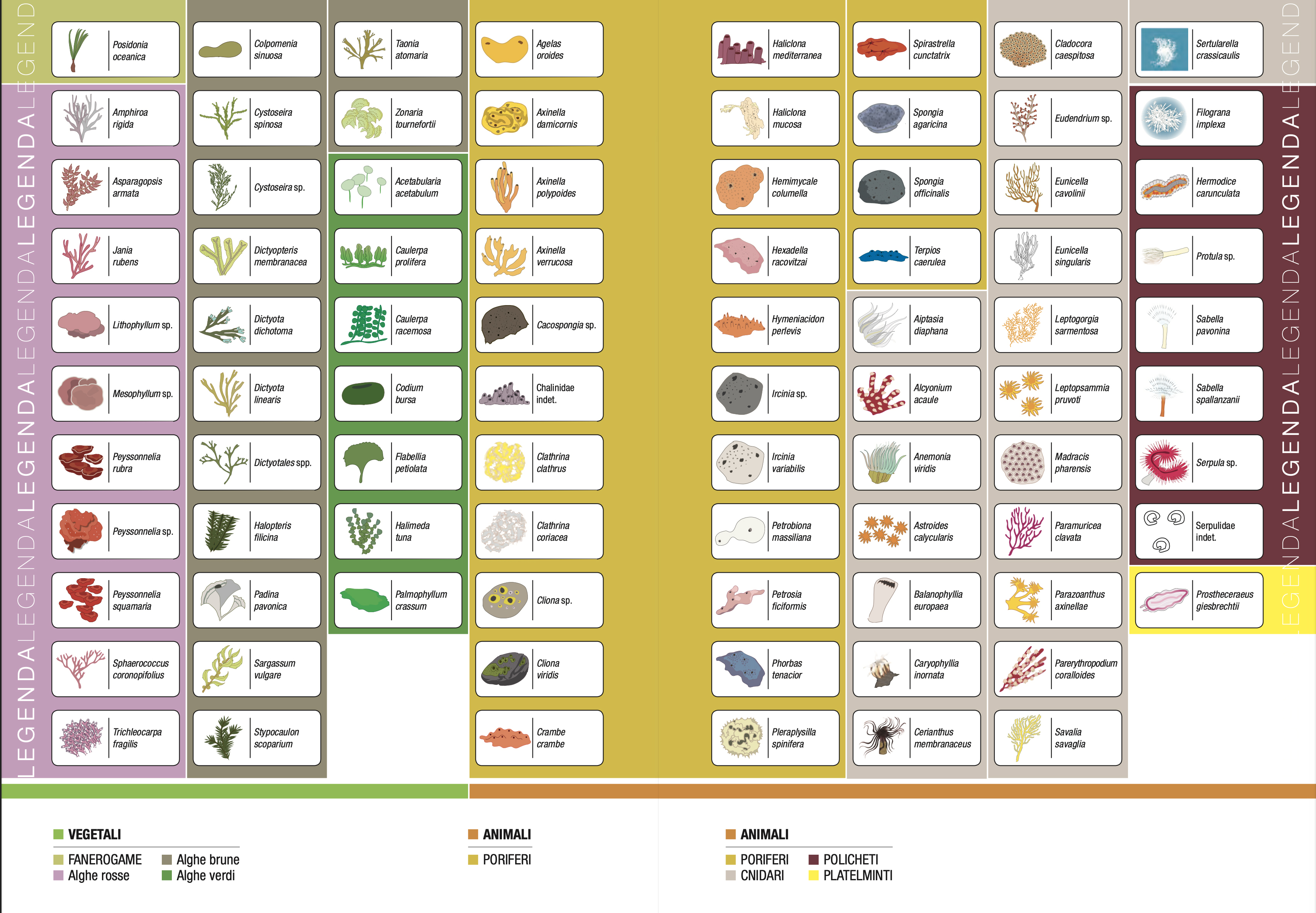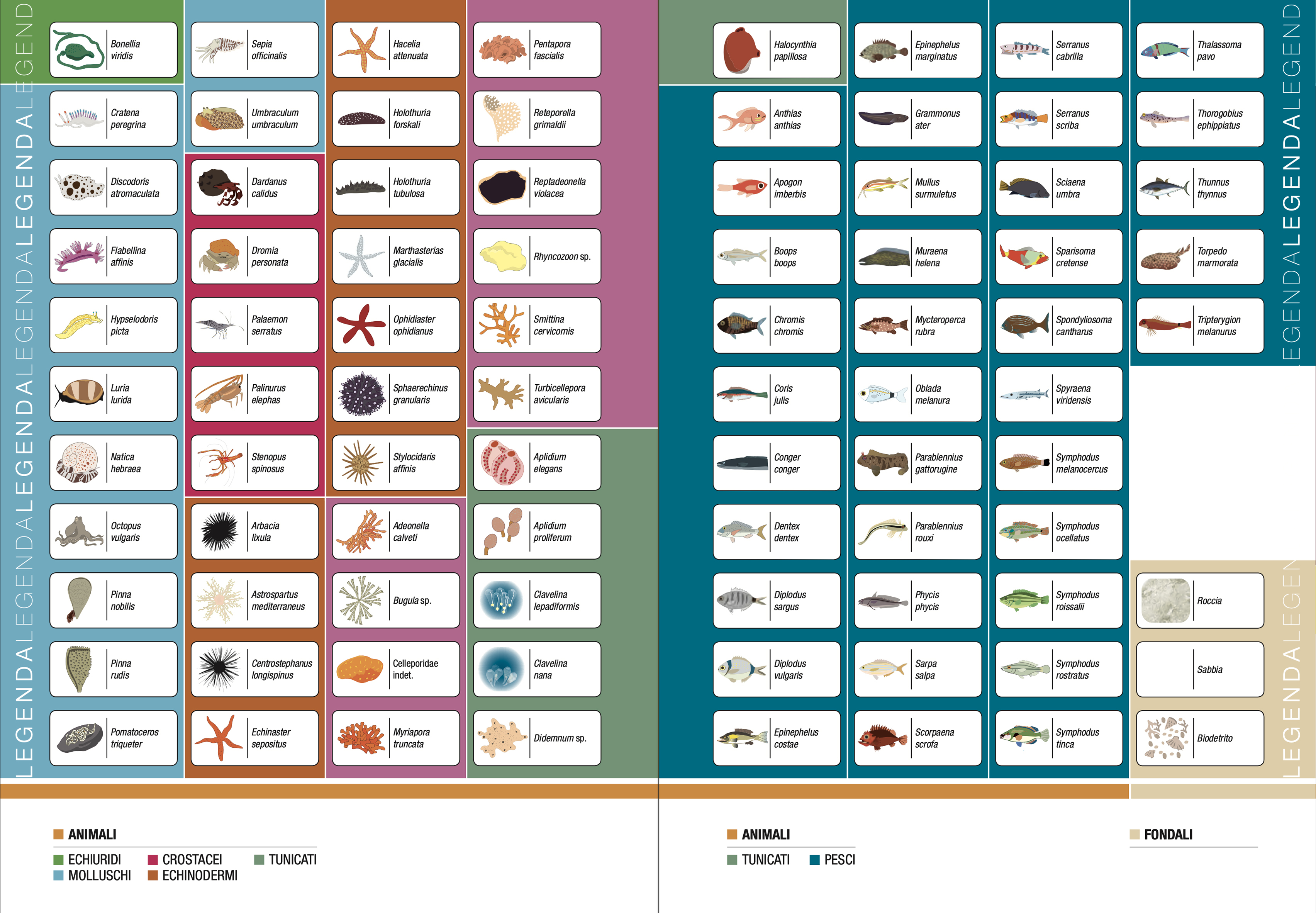Site 6 - Orlo Paese
Interesting ravines and a large, variously concreted cave characterise the itinerary. The route begins at about 17 m along an extensive Posidonia oceanica meadow, where rocks colonised by algal carpets formed by Halimeda tuna, Flabellia petiolata and the nets of Caulerpa racemosa can be seen. The shadier vertical walls can host individuals of the yellow gorgonian Eunicella cavolinii and coloured sponges of the species Agelas oroides, Crambe crambe and Axinella damicornis. Descending to about 19 m, one encounters interesting passages between the boulders and small caves that create areas of semi-darkness suitable for hosting numerous organisms. Abundant among them are colonies of the orange madrepore Astroides calycularis, the bryozoans Adeonella calveti, Myriapora truncata, Smittina cervicornis and the delicate lacewings of Reteporella grimaldii. Deep clefts articulate and colour the underwater landscape, with the pink patches of the sponge Hexadella racovitzai, and the orange ones of Spirastrella cunctatrix. On the vaults one can recognise the yellow corallites of the madrepore Leptopsammia pruvoti and the white lacework of the polychaete Filograna implexa. Numerous specimens of the nudibranch, known as the 'sea cow' (Discodoris atromaculata), feed on the sponge Petrosia ficiformis. Outside the rifts, at about 21 m, one encounters P. oceanica, as well as extensive covers of the seaweed Halimeda tuna, small fans of Zonaria tournefortii and Peyssonnellia rubra. At a depth of about 23 m, another large cave under the Posidonia meadow has walls densely concreted by the sponges Clathrina coriacea, A. oroides, P. ficiformis, while the hermit crab Dardanus calidus can be spotted between the cracks. Serpulae and colonies of A. calycularis and L. pruvoti can be found among the sponges. Outside the cave, at about 24 m, large specimens of sponges (Ircinia sp.) can easily be spotted on the scattered boulders, while numerous salps (Sarpa salpa) swim in the Posidonia oceanica meadow, and burbot (Spondyliosoma cantharus) and ductus specimens (Epinephelus costae) are easily observed.
Legenda:


RES Edizioni, Sarzana (SP)